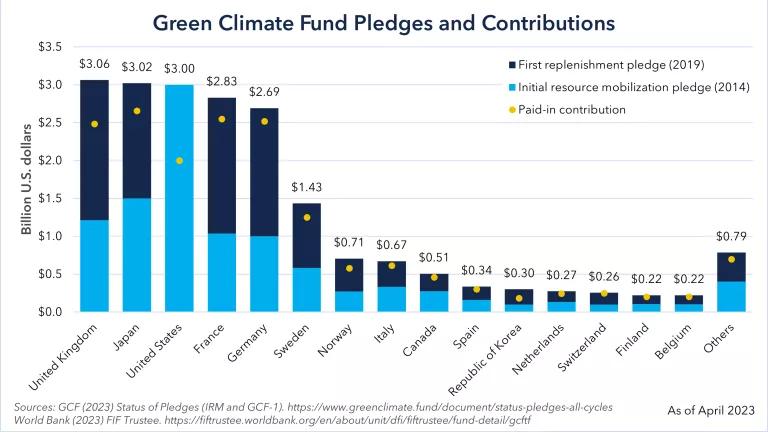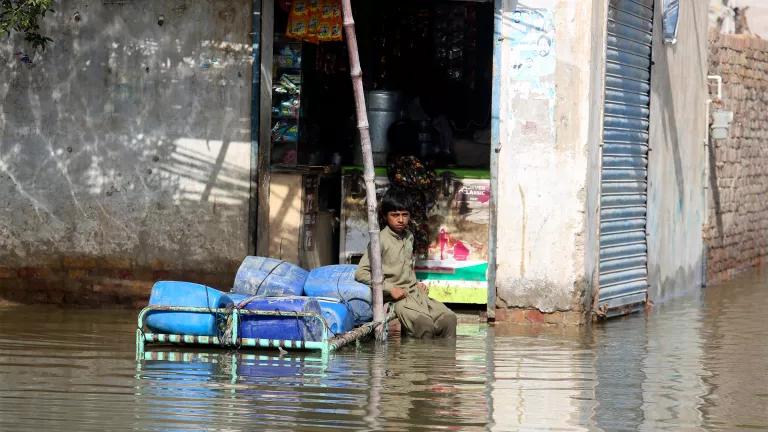NRDC Testifies on Banking and Climate Risks
NRDC testifies about the unique and impactful role that the banking and financial services sector can play in combatting the global climate crisis.

A coal-fired power plant in Birmingham, Alabama
On March 1, 2022, NRDC’s Northeast Policy and Legislative Director Richard Schrader presented a version of the following testimony at a public hearing on Banking and Climate Risks sponsored by several New York State Senate Committees. In his comments, Richard describes the unique and impactful role that the banking and financial services sector can play in the global climate crisis.
The climate crisis now occupies every corner of the global social and economic fabric. The latest United Nation’s Intergovernmental Panel on Climate Change (IPCC) stressed that the crisis is moving with an even graver rapidity than expected—this from a panel that last August declared the climate crisis a Code Red for humanity and the planet. IPCC Working Group II co-chair Debra Roberts states in the report’s opening comments that tackling climate change means the private sector and civil society “working together to prioritize risk reduction as well as equity and justice in decision-making and investments.” Clearly the IPCC’s call to arms wants all hands on deck—especially the private sector.
The financial services industry has the opportunity and capacity to play a critical role in reversing the most salient cause of climate change, the expansion of the fossil fuel sector as well as accelerating the expansion of investment in renewable technologies. But that has not yet become accepted policy or practice. According to the research group BankTrack, the world’s 60 largest private sector banks, measured in assets, funneled between 2016 and 2020, nearly $4 trillion into fossil fuel projects and companies globally. Their rhetoric and likely good intentions have not kept pace with the industry’s practice.
We’ve already seen the devastating impacts of the extreme weather which is a direct product of the climate crisis: from Tropical Storms Sandy and Ida to intensified hurricanes, drought in the American West, melting of glaciers at the planet’s poles and rising sea levels the resulting damage is apparent and severe.
For the banking industry, analysts argue that the risks to its assets can be understood as both physical and transition threats. Physical risks include the decline or actual destruction of property invested in by the financial services industry. This includes property damages caused by flooding or destructive storms as well as supply chain disruptions. We are already experiencing an increase in the frequency and intensity of forceful storms that previously were considered rare events.

Downed powerlines lean over a road after Hurricane Laura destroyed much of Lake Charles, Louisiana.
Banks will experience increased vulnerability if their borrowers are particularly at risk from climate shifts—power grids, water utilities and telecommunication infrastructure have already suffered costly damages.
Economically vulnerable communities are especially threatened and their already narrow access to capital will be further reduced. There is evidence that the municipal bond market has begun restructuring their price design, particularly on the east coast, in response to rising sea level exposure. This could result in lower valuations and in turn diminished resources for those financial institutions that are the largest holders of these instruments.
The transition risks for banks are equally clear. As the economy shifts to become less carbon-intensive and as market and consumer demand accelerate use of zero-carbon technologies, banks with significant fossil fuel assets risk rapid asset value deflation. In particular, new investment in expanded fossil fuel projects are unlikely to pay off if regional, state and national governments meet their climate policy goals. Loans and investments with long maturities have added and perilous exposure to transition risk.
The New York State Department of Financial Services (DFS) has been a national leader in setting out new terms for the industry to manage climate risks, including the creation of a new, robust Division of Climate Risk. In a letter to the CEOs of Regulated Financial Institutions, DFS provided important guidance to the industry regarding new climate related responsibilities:
- Regulated organizations need to begin integrating the financial risks associated with climate change into their governance frameworks and overall business strategies;
- Designate a board member or assign a full committee to be accountable for the institution’s assessment of climate impacts and subsequent risk management practices;
- Prioritize climate-related financial risk disclosure;
- Conduct risk assessments of both physical and transition risks of climate change—take concrete, transparent steps to mitigate those risks.
Similar regulatory goals are reflected in a letter from 11 U.S. Senators, led by Sen. Jack Reed from Rhode Island, to a group of national financial regulators, including Federal Reserve Chair Jerome Powell. The Senators urge the regulators to implement broader guidance regarding financial risk, including a call to align investment strategy with investing in companies and public assets adopting as a core principle a climate risk management strategy supporting a 1.5 C future. The Office of the Comptroller of the Currency has committed to establishing a climate risk guidance framework for the industry on a national level.
This week, the insurance giant, the American International Group (AIG) has made a commitment to achieve a net-zero greenhouse gas emissions portfolio by 2050. Among the immediate policy changes were an end to invest in or underwrite construction of coal-powered plants; to invest in or underwrite new oil sands project; and an end to underwriting any Arctic energy exploration activities.
At the end of last year, the Basel Committee on Banking Supervision (BCBS) issued a consultative document establishing principles for banks and regulators to more aggressively manage climate-related financial risk. Among their strongest recommendations was a call for banks to consider setting limits on their exposure to and investments in companies, geographic sectors or products that do not align with the industry’s newly developed climate-related business strategy. The BCBS suggested that regulators engage a broad and diverse range of stakeholders to best achieve a full measurement of climate risks and most importantly, to allow for ample climate-dedicated resources.
These guidelines, statewide, national and international in scope, are a good starting point for the New York State legislature to consider legislative opportunities to mandate the industry’s expanded mitigation of climate-related risk. At the least, the legislature should consider legislation that will require the financial services industry to bring its policies in line with New York’s landmark Climate Leadership and Community Protection Act (CLCPA). That law, the most ambitious climate law in the nation, requires that the state achieve a 70% renewable energy grid by 2030, 100% zero-emission electricity sector by 2040, a 40% reduction of greenhouse gas emissions by 2030 and an 85% reduction by 2050.

New York State’s landmark Climate Leadership and Community Protection Act (CLCPA) requires a transition to renewable energy.
This would include an annual disclosure document that shows each bank’s investments in fossil fuel companies and projects. In addition, legislation should require that the disclosure be transparent and show a year-to-year commitment to align its risk and investment policies with CLCPA metrics by reducing investments in fossil fuel companies and projects. Also a section of the annual disclosure statement should report on affirmative actions the institution had made and planned to make in the future to support New York’s transition to a low-carbon economy. Another key disclosure would be an analysis of how these new policies impact New York’s most vulnerable communities, a central criterion of both the CLCPA and the Climate Action Council.
These next steps can build on the superb framework established by DFS and the CLCPA to enhance financial stability in the industry and continue New York’s leading climate advocacy in the face of this global crisis.




